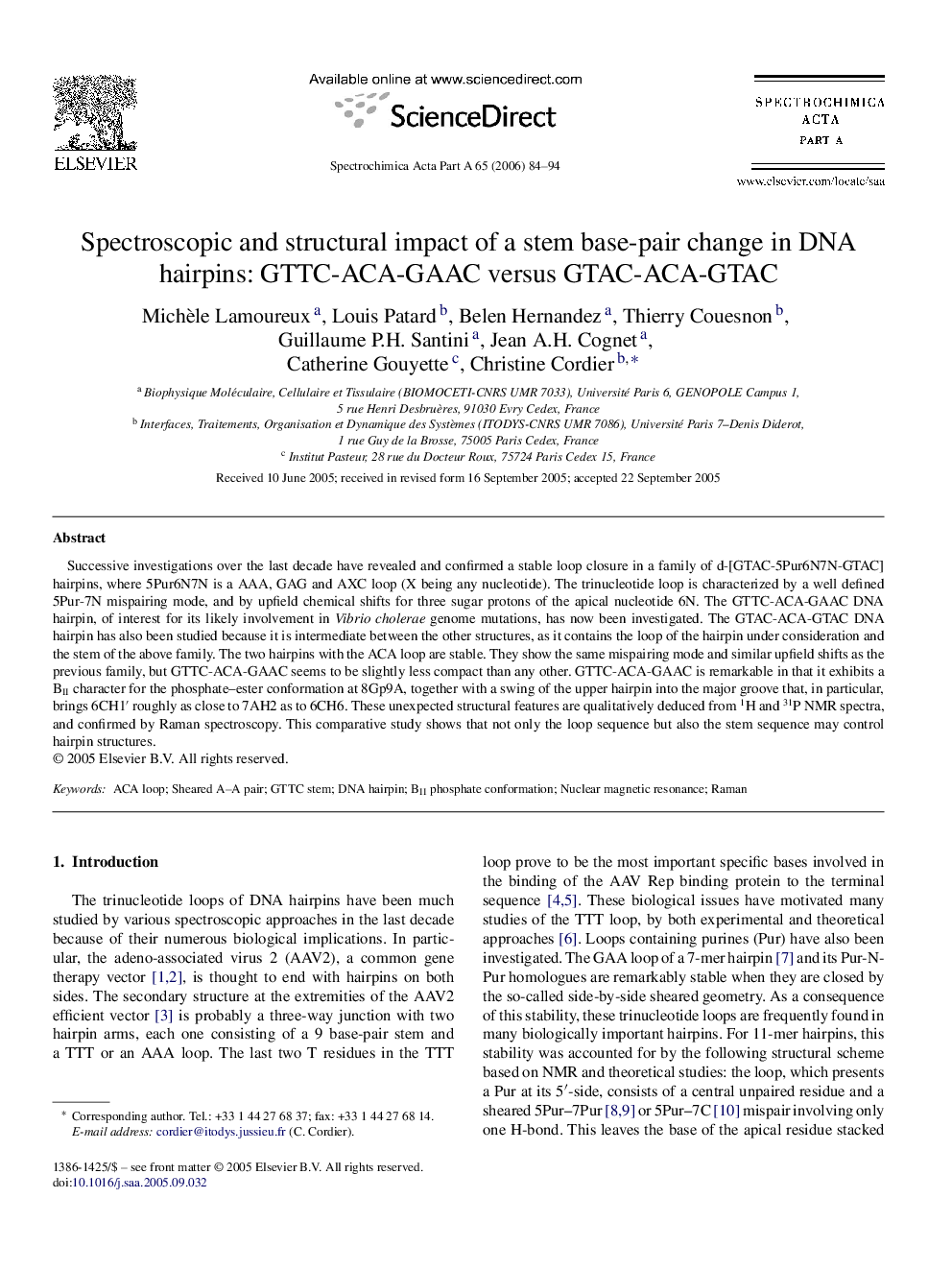| Article ID | Journal | Published Year | Pages | File Type |
|---|---|---|---|---|
| 1236214 | Spectrochimica Acta Part A: Molecular and Biomolecular Spectroscopy | 2006 | 11 Pages |
Successive investigations over the last decade have revealed and confirmed a stable loop closure in a family of d-[GTAC-5Pur6N7N-GTAC] hairpins, where 5Pur6N7N is a AAA, GAG and AXC loop (X being any nucleotide). The trinucleotide loop is characterized by a well defined 5Pur-7N mispairing mode, and by upfield chemical shifts for three sugar protons of the apical nucleotide 6N. The GTTC-ACA-GAAC DNA hairpin, of interest for its likely involvement in Vibrio cholerae genome mutations, has now been investigated. The GTAC-ACA-GTAC DNA hairpin has also been studied because it is intermediate between the other structures, as it contains the loop of the hairpin under consideration and the stem of the above family. The two hairpins with the ACA loop are stable. They show the same mispairing mode and similar upfield shifts as the previous family, but GTTC-ACA-GAAC seems to be slightly less compact than any other. GTTC-ACA-GAAC is remarkable in that it exhibits a BII character for the phosphate–ester conformation at 8Gp9A, together with a swing of the upper hairpin into the major groove that, in particular, brings 6CH1′ roughly as close to 7AH2 as to 6CH6. These unexpected structural features are qualitatively deduced from 1H and 31P NMR spectra, and confirmed by Raman spectroscopy. This comparative study shows that not only the loop sequence but also the stem sequence may control hairpin structures.
